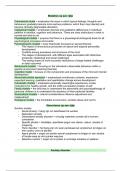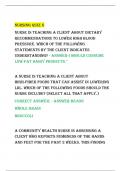Summary
Korte samenvatting developmental psychopathology
- Course
- Institution
Als je deze samenvatting leert en uit je hoofd kent, heb je al 60% van het tentamen binnen. Ik had voornamelijk dit geleerd en scoorde een 7. Dus zeker een aanrader met tijdsnood;)
[Show more]







